The Rabiah Scale, Part 3
One day, many years ago, on my blog (Blogatog), I was asked a question about how likely a certain mechanic was to return to a premier set. Due to my love of scales, I improvised something I called the Storm Scale (named after storm because the storm mechanic was a 10), which has a rating from 1 to 10, with 1 being the likeliest of a mechanic returning to a premier set. Once the scale existed, players started asking me where their favorite game components landed on the scale.
Eventually, I wrote a column introducing and explaining the Storm Scale to all of you and talking about the likelihood of the Khans of Tarkir block mechanics returning.
My second Storm Scale column was about the mechanics of the Ravnica and Return to Ravnica blocks.
My third Storm Scale column was about the mechanics of the Zendikar and Battle for Zendikar blocks.
My fourth Storm Scale column was about the mechanics of the Innistrad and Shadows over Innistrad blocks.
My fifth Storm Scale article was about the mechanics of the Mirrodin and Scars of Mirrodin blocks.
My sixth Storm Scale article was about the mechanics of the Kaladesh and Amonkhet blocks.
My seventh Storm Scale article was about the mechanics of the Theros block and Theros Beyond Death.
My eighth Storm Scale article (Part 1 and Part 2) was about Throne of Eldraine, Ikoria: Lair of Behemoths, Zendikar Rising, Kaldheim, and Strixhaven: School of Mages.
The popularity of the Storm Scale spawned several other scales: the Venser Scale for Planeswalkers, the Beeble Scale for creature types, and the Rabiah Scale for planes. Back in November of 2018, I wrote a two-part article dedicated to the Rabiah Scale (Part 1 and Part 2). It's named after Rabiah, the setting of Arabian Nights, because it's a 10 on the scale (i.e., we're very unlikely to return there).
Well, six years have gone by, and we've created more planes (and there was one plane I missed last time I did the articles). In today's column, I'm going to explain the various factors that go into predicting whether we'll return to a plane and then rate each one on the scale from 1 to 10, with 1 being very likely and 10 being very unlikely.
As I spelled out last time, here are the criteria I will be using:
Popularity
This criterion is very similar to the Storm Scale. Basically, did the audience like it? The more all of you like a particular plane, the greater the chance of its return. I'm using data wherever I have access to it, but for some of the earlier planes, I'm using more anecdotal evidence, as we didn't do market research in the early days.
- Very Popular – This means that through our market research, this plane falls in the top 25% of planes of all time. Note that all these categories are comparing the current planes against all the planes we've done (well, since we started doing market research many years ago), so getting in this top section is difficult.
- Popular – This means that through our marketing research, this plane falls above the average but not in the top 25%.
- Liked – This means that through our research, this plane falls below average but not in the bottom 25%. I should note that we aim for our average to be well liked, so being below average doesn't mean most players don't like it, just that there are other planes they like more. Being in this category doesn't automatically keep the plane from having a chance to return.
- Unpopular – This means that our research puts this plane in the bottom 25%. Falling in this last section does decrease the chance of a return.
Mechanical Identity
This category examines whether the plane has mechanical associations. Is there something for us to mechanically design around? Is there a component that the audience associates with this plane that would create excitement for its return?
- Strong – This means the plane is strongly associated with one or more mechanical components. This makes it easier to design, more likely to excite players, and increases its chances of a return.
- Average – This means the plane has some mechanical associations, but not as strong as they could be.
- Weak – This plane has little to no mechanical associations. This decreases its chances of a return.
Creative Identity
This is the companion to the mechanical identity category. Instead of looking at mechanics, this category looks at the creative elements—the cosmology, the look and feel, the inhabitants, the locations. Do all of them have a strong cohesive feel that makes the plane feel like a single unified plane? The more the plane has a creative cohesion, the easier it is to return to it and the more excited the players will get upon learning of a return.
- Strong – This plane has a very clear identity. For example, if you saw a random card, you'd know in a heartbeat that it comes from this plane.
- Average – This plane has an identity but not one quite as crisp and delineated.
- Weak – This plane's identity is not as cohesive as we like planes to be.
Room for Expansion
This category examines what space there is to create new things in this plane. Sets, even returns, must introduce new material. Is this plane set up to allow new exploration? A big part of this category is how much the earlier visit(s) did to hint at other aspects of the plane. The more room for expansion, the easier it will be to return there.
- Significant Room for Expansion – This means the plane has many new things to explore in a return.
- Some Room for Expansion – This means the plane has some new things to explore in a return.
- Minimal Room for Expansion – This means the plane would struggle to find new things to explore.
Story Continuation
This category talks about what story threads were left last time we were there. In other words, does returning to this plane allow us to finish telling a story that we started when we were there last? Note that this is weighted by how much the audience cares about a certain storyline.
- Major Plot Line – This plane set up a story or stories that players have been asking about.
- Minor Plot Line – This plane set up a story or stories that players have been asking about, but less.
- Minimal/No Plot Line – This plane set up a story or stories that players have not been asking about or didn't set up any stories.
Before I get to the new planes I have yet to discuss, let's remind you of the ratings of the planes I did talk about in parts one and two:
Alara: 5
Amonkhet: 5
Dominaria: 1
Fiora: 6
Innistrad: 1
Ixalan: 4
Kaladesh: 5
Kamigawa: 8
Lorwyn/Shadowmoor: 7
Mercadia: 9
New Phyrexia: 5
Phyrexia: 9
Rabiah: 10
Rath: 9
Ravnica: 1
Regatha: 6
Shandalar: 7
Tarkir: 4
Theros: 3
Ulgrotha: 9
Vryn: 6
Zendikar: 2
A quick recap of planes we have visited since November of 2018 and their ratings (not counting March of the Machine, which visited almost all of them):
Dominaria (1) – Dominaria United and The Brothers' War
Innistrad (1) – Innistrad: Midnight Hunt and Innistrad: Crimson Vow
Ixalan (4) – The Lost Caverns of Ixalan
Kamigawa (8) – Kamigawa: Neon Dynasty
New Phyrexia (5) – Phyrexia: All Will Be One
Ravnica (1) – Ravnica Allegiance, War of the Spark, and Murders at Karlov Manor
Theros (3) – Theros Beyond Death
Zendikar (2) – Zendikar Rising
You'll notice we visited all the planes that were rated 3 or below. In addition, we visited one 4 (Ixalan), one 5 (New Phyrexia), and one 8 (Kamigawa), which shows us that any place has the potential for a revisit, even those with a higher number, but the lower numbers have a better chance.
Last year at Gen Con, we celebrated Magic's 30th anniversary by announcing the next three years' worth of in-universe sets (i.e., not Universes Beyond). Of those we announced, here are the planes from the list above that we will return to and their scores:
Lorwyn/Shadowmoor (7) – "Wrestling"
Tarkir (4) – "Ultimate"
We also announced that "Tennis" will return players to two planes that have been the primary settings for premier sets (from the list above) and one plane that has been mentioned on cards but has never been a primary setting (not necessarily from the list above, but maybe).
One final note about the Rabiah Scale (as well as all the other scales) is that I make my grade ignoring the future knowledge I have. Today will be a little strange as there is some knowledge that all of you have about the future (due to last year's announcement), so I'll acknowledge when we all know something.
With all that covered, let's start talking planes. I'll be going in alphabetical order.
Arcavios
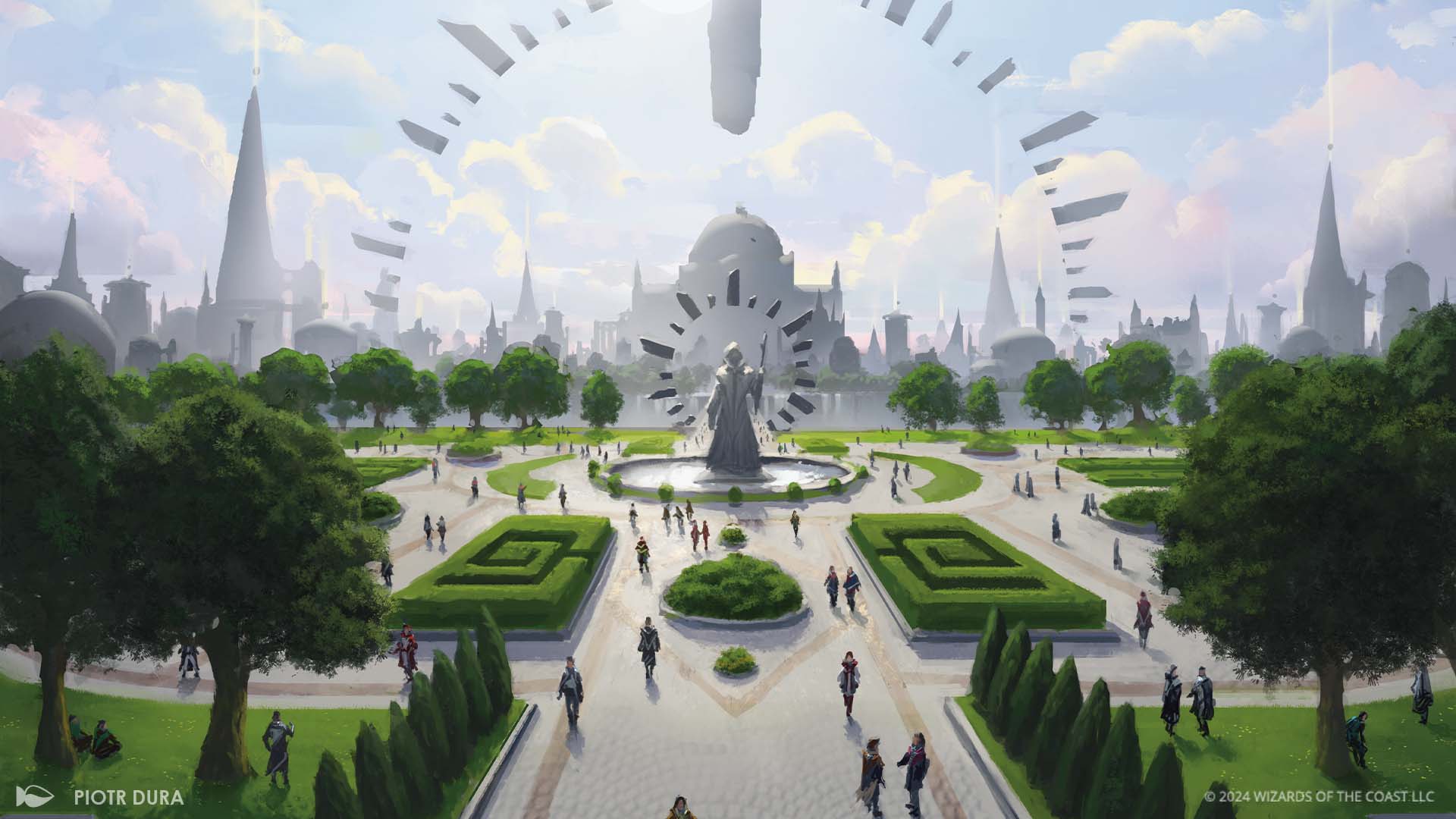
Previously seen in: Strixhaven: School of Mages
Popularity: Very Popular
Strixhaven: School of Mages is one of the best-selling premier sets of all time. Players liked seeing the magical school tropes captured in a plane and appreciated our take on it. However, we heard negative feedback from players that the plane was based mostly on colleges in the United States, so some of the cards were flavorfully less universal. Note that Arcavios is the plane where Strixhaven University is located.
Mechanical Identity: Strong
Strixhaven University gave Arcavios a strong mechanical hook. First, it's a two-color enemy faction plane, with each faction being tied to a particular college and area of study. Second, the university is closely associated with an "instants and sorceries matter" theme. Third, it's a place for top-down designs playing around in the resonance of universities in general and the magical school genre in particular.
Creative Identity: Strong
The resonance center for Strixhaven is solidly something unique on its own. The idea of a magical school was briefly touched upon in the Urza's Saga block with
Room for Expansion: Some Room for Expansion
Our first visit to Arcavios was all about Strixhaven University, a single location on the plane. This means that there are large portions of the plane free for exploring. A big challenge is that players associate Arcavios with Strixhaven University, which was quite popular, so there's an expectation that a visit to Arcavios would include at least some amount of Strixhaven.
Story Continuation: Minor Plot Line
Liliana is hiding out at Strixhaven University as Professor Onyx. Kasmina is also connected to Strixhaven and seems to be up to something, but we don't know what. There are several students and faculty members whom we know at the school, but not a lot of ongoing plot lines. Several faculty members died defending Arcavios from the Phyrexians, so there are potential storylines about Strixhaven recovering. Also, Quintorius sparked and became a Planeswalker.
Rabiah Scale Rating: 3
The plane is popular. It has a strong mechanical and creative identity, although tied specifically to Strixhaven University. There are some challenges to how to see other parts of Arcavios while still delivering on the popularity of the magic school, but it's an achievable task. This is one of the return planes I announced last year for "Yachting," so we're going back!
Eldraine
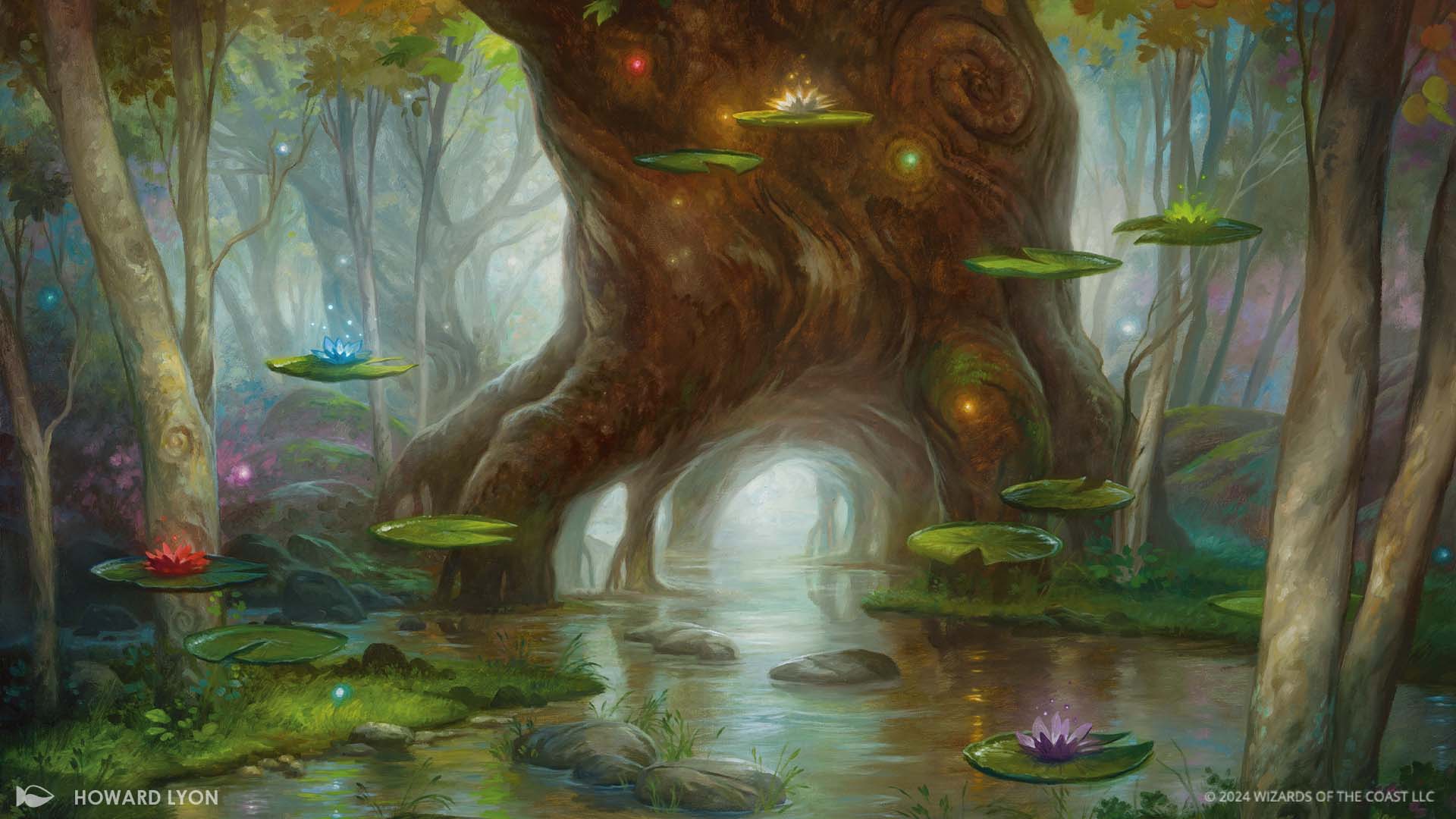
Previously seen in: Throne of Eldraine and Wilds of Eldraine
Popularity: Popular
Eldraine is a mix of Camelot themes and fairy-tale inspirations. The former is a bit less popular than the latter, but each has its fans. The lighter tone, in general, is seen mostly as a positive thing. The biggest note we've gotten about the plane through market research is that players enjoy it most when Magic does its spin on the source material (for example, our Goldilocks is a bear hunter).
Mechanical Identity: Average
The plane is best known for its top-down designs using fairy-tale themes. The set introduced an iconic mechanic, adventurer cards, and an artifact token, Food, which I would expect to see on any revisit. The first visit in Throne of Eldraine had a monocolor theme tied to the courts. That was abandoned in Wilds of Eldraine because the focus moved to the fairy-tale element of the set (the courts were the biggest casualty of the Phyrexian invasion). That shift added more of a focus on enchantments, especially through Role enchantment tokens. I assume a revisit would probably pick up the enchantment theme as few planes are tied to enchantments.
Creative Identity: Strong
I think Eldraine's greatest strength is its worldbuilding. It's much beloved by a large portion of the playerbase (my inbox is always filled with excitement when we announce an Eldraine set). It taps into a genre space that's well known and much beloved and allows us to make cards that feel uniquely of this plane.
Room for Expansion: Some Room for Expansion
Eldraine has two main components, the courts and the wilds. As the courts played a small role in Wilds of Eldraine, there's more to explore. The known fairy-tale tropes have been well tapped, so any return will require more time to create new stories in the setting, but the archetypes being so well known will make that easier to do than other top-down settings.
Story Continuation: Major Plot Line
Eldraine took a beating in the latest Phyrexian war, and there are many aspects of it we could explore on our next visit, the return of the courts being the main one. Rowan and Will are both from Eldraine, and their storylines have many unresolved issues.
Rabiah Scale Rating: 4
The plane is well liked, and there's plenty of material to work with. It's in greater flux than most planes, so a return would require a lot of work answering a whole bunch of questions, but that does make for a meaty set from a narrative perspective.
Ikoria
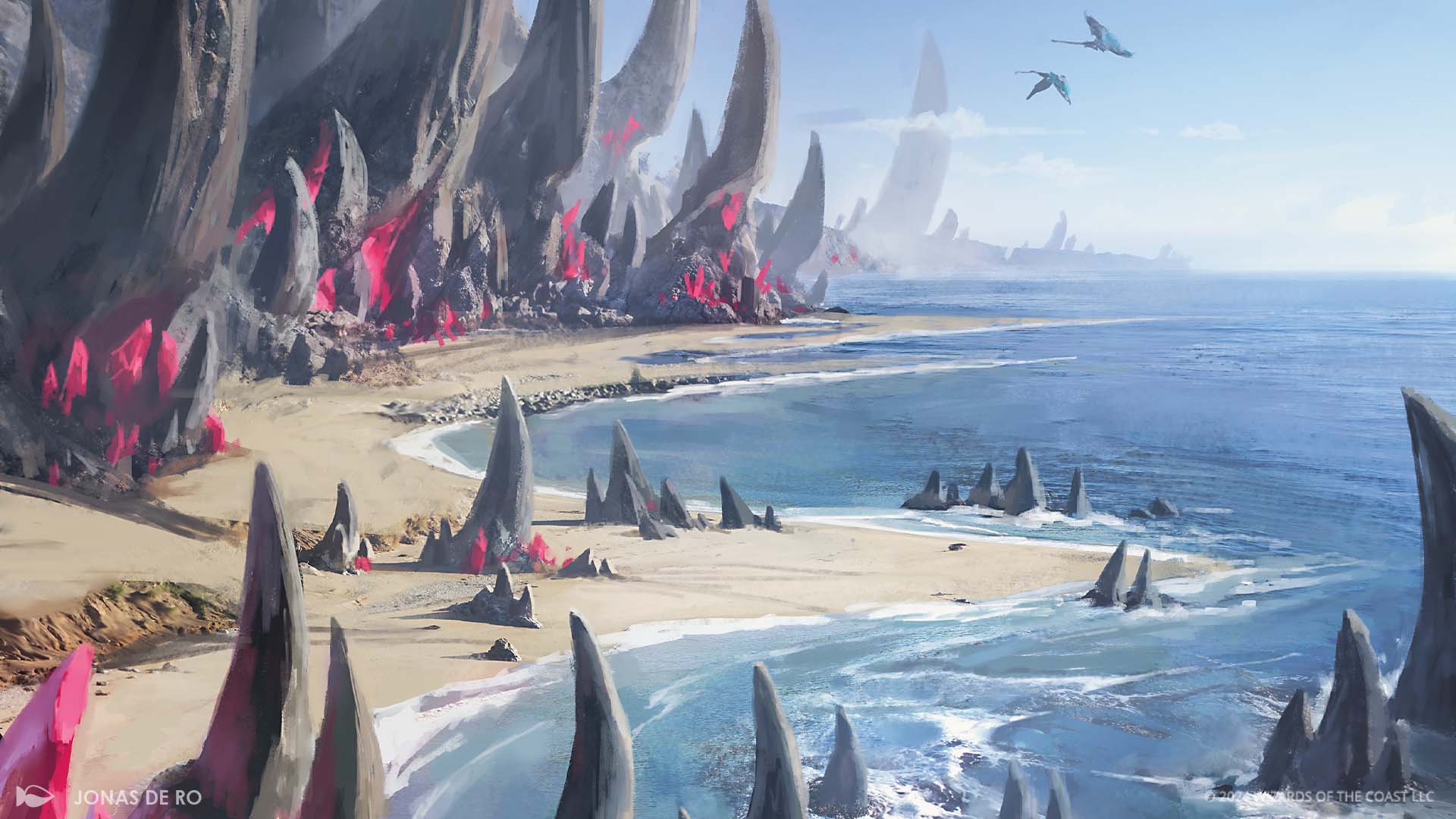
Previously seen in: Ikoria: Lair of Behemoths
Popularity: Popular
Ikoria: Lair of Behemoths was the best-selling premier set of the year when it came out. Players liked the monster vibe of the plane, but it had several mechanical issues, which I will get to below.
Mechanical Identity: Average
The two mechanics most connected to Ikoria were mutate and companion (the set also had cycling and introduced keyword counters). Mutate, while popular with some players, is one of the more complex mechanics we've ever published and caused a lot of player confusion. Companion is the only mechanic we've ever had to correct for power-level reasons. While both would be considered for a return, neither is a slam dunk like landfall for Zendikar or Adventures for Eldraine. Both come with a lot of baggage and play design/play balance concerns.
Creative Identity: Average
Players enjoyed the monster theme, but the plane had less environmental cohesion than many of our other planes. It's a plane that had to hunker down to survive its monsters, but it's not as indicative (i.e., the players know what to expect) as many of our other planes.
Room for Expansion: Some Room for Expansion
Monsters as a theme have a meaty design space. I think there's a lot of potential for new mechanics that flavorfully fit the plane. We also just saw a small portion of it, so there's decent potential from a worldbuilding perspective.
Story Continuation: Minimal Plot Line
The only native Planeswalker to Ikoria, Lukka, died during the latest Phyrexian war. There's not much outstanding to pick up.
Rabiah Scale Rating: 5
Ikoria is a tricky plane to grade. It originates from a popular set with a flavorful theme, but its execution makes it a bit tricky for a return.
Kaldheim
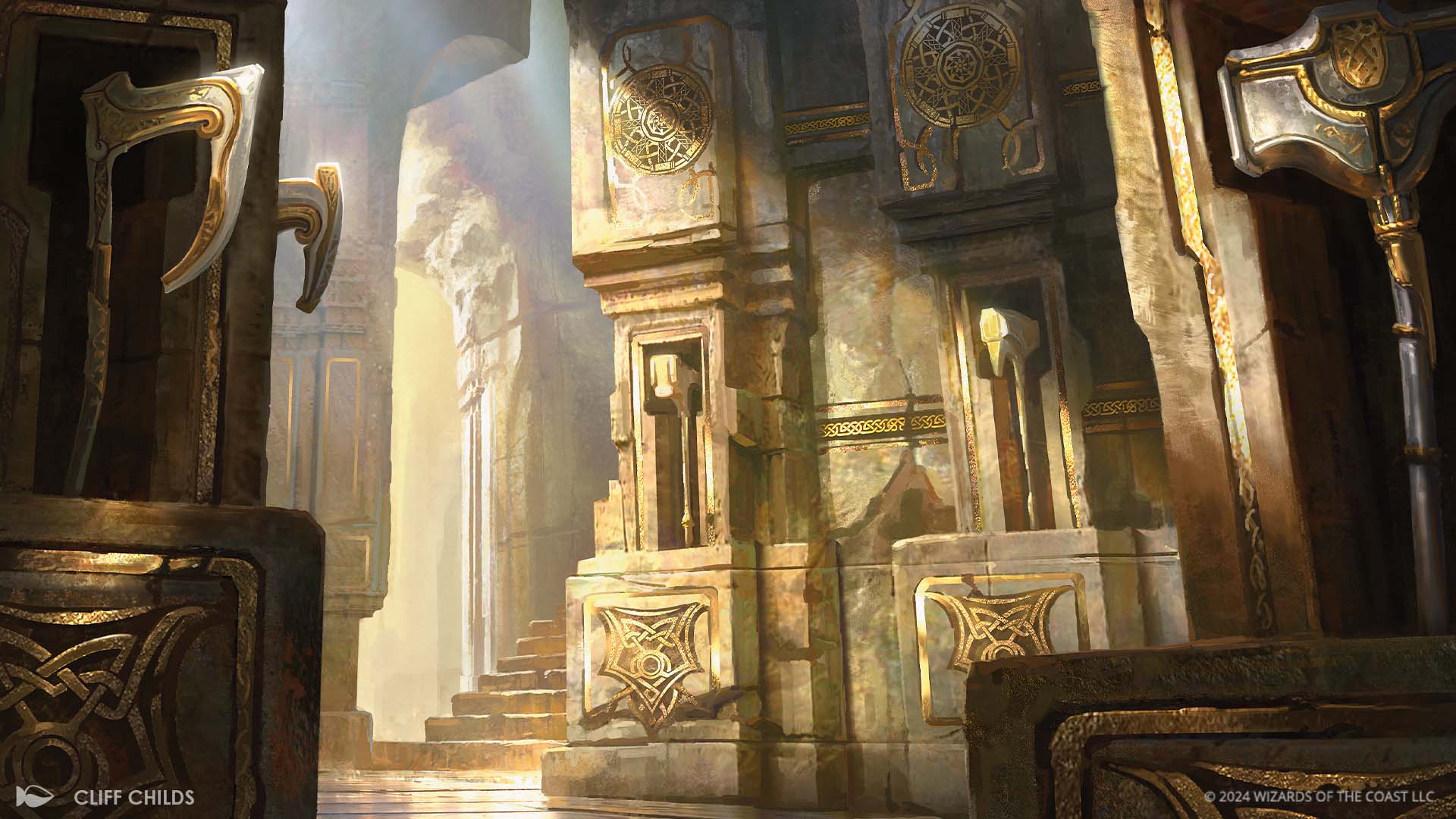
Previously seen in: Kaldheim
Popularity: Popular
Kaldheim is our Norse-inspired plane. It's technically ten planes all linked together through Omenpaths (it's the original home of the Omenpaths). Players liked the plane, with most feedback revolving around a desire to see more of it.
Mechanical Identity: Average
The breakout mechanic in Kaldheim was foretell. Also popular were the modal double-faced cards with a God on one side and a related permanent on the other side and the snow theme. The set also introduced the mechanic boast and brought back changeling. If we returned, I think there's a decent chance that foretell and snow would come back, and maybe God MDFCs.
Creative Identity: Strong
This set had an expansive source material, and we put in a lot of work designing all the planes. It scored well with our audience, who was eager to see even more.
Room for Expansion: Significant Room for Expansion
This set bit off a lot creatively. There were ten distinct different planes each with a focus on a different creature type. A return would have a surplus of opportunities for exploration.
Story Continuation: Major Plot Line
Kaldheim played a major role in the last Phyrexian war. Its World Tree was adapted by the Phyrexians to allow them to invade many planes of the Multiverse (which resulted in all the Omenpaths). This left the World Tree and Kaldheim in chaos, and any return would have to deal with the aftermath of that.
Rabiah Scale Rating: 4
The plane has a strong flavor that players want to see more. It has a solid mechanical core. There's even a major storyline left unresolved. The trickiest part of a return is tackling the same problem from the first visit: how do you fit so much into a single set?
Kylem
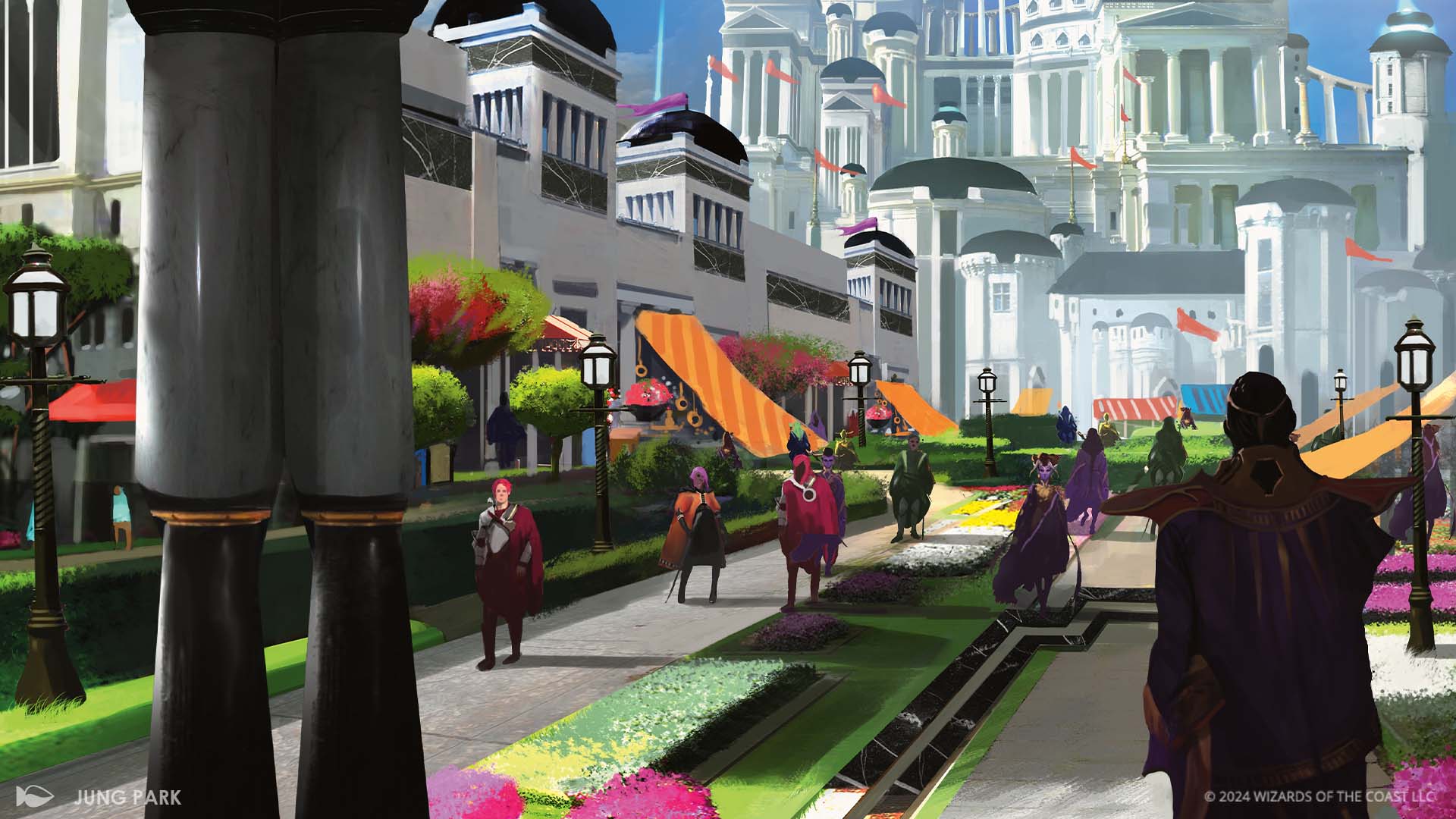
Previously seen in: Battlebond
Popularity: Liked
Kylem was the main setting for a set and existed in 2018, but I forgot to include it in my previous Rabiah Scale articles. Due to a couple factors (it was in a supplemental set, which often don't have a unified plane, and all the new cards that showed the plane were set in an arena known as Valor's Reach), I don't think awareness of the plane is particularly high.
Mechanical Identity: Average
Battlebond was all about Two-Headed Giant, so its main mechanics (partner with, assist, and support) all leaned into the theme of teaming up. If we returned for a second Battlebond, the team-up themes would be easy to return to, but the Rabiah Scale is about a plane being in a new premier set, which makes the mechanical identity a little more questionable, as we focus premier sets on two-player interactions. I assume a premier set might look to the theme of sports, which is both resonant and has more top-down design opportunities.
Creative Identity: Weak
The entirety of the creative expression, which was only on new cards, was exclusively inside of a single, albeit large, arena. A premier set would need more to work with, so a return would require a lot of new ideas for the plane outside the stadium.
Room for Expansion: Significant Room
This is a double-edged sword. Battlebond did little to lock in Kylem to any one theme, save maybe sports, but also provided next to nothing to build on. Going to Kylem would function a lot like visiting a brand-new plane.
Story Continuation: Minimal, No Plot Line
Battlebond was the set Rowan and Will first appeared in, and there was a little backstory on some of the partners, but none of that has much meat for the story.
Rabiah Scale Rating: 8
There's just not a lot for a premier set to work with. Yeah, it's mostly a blank canvas, but why not just do a new plane that could have more to build around? A return would need to have a strong hook to why specifically it's Kylem.
New Capenna
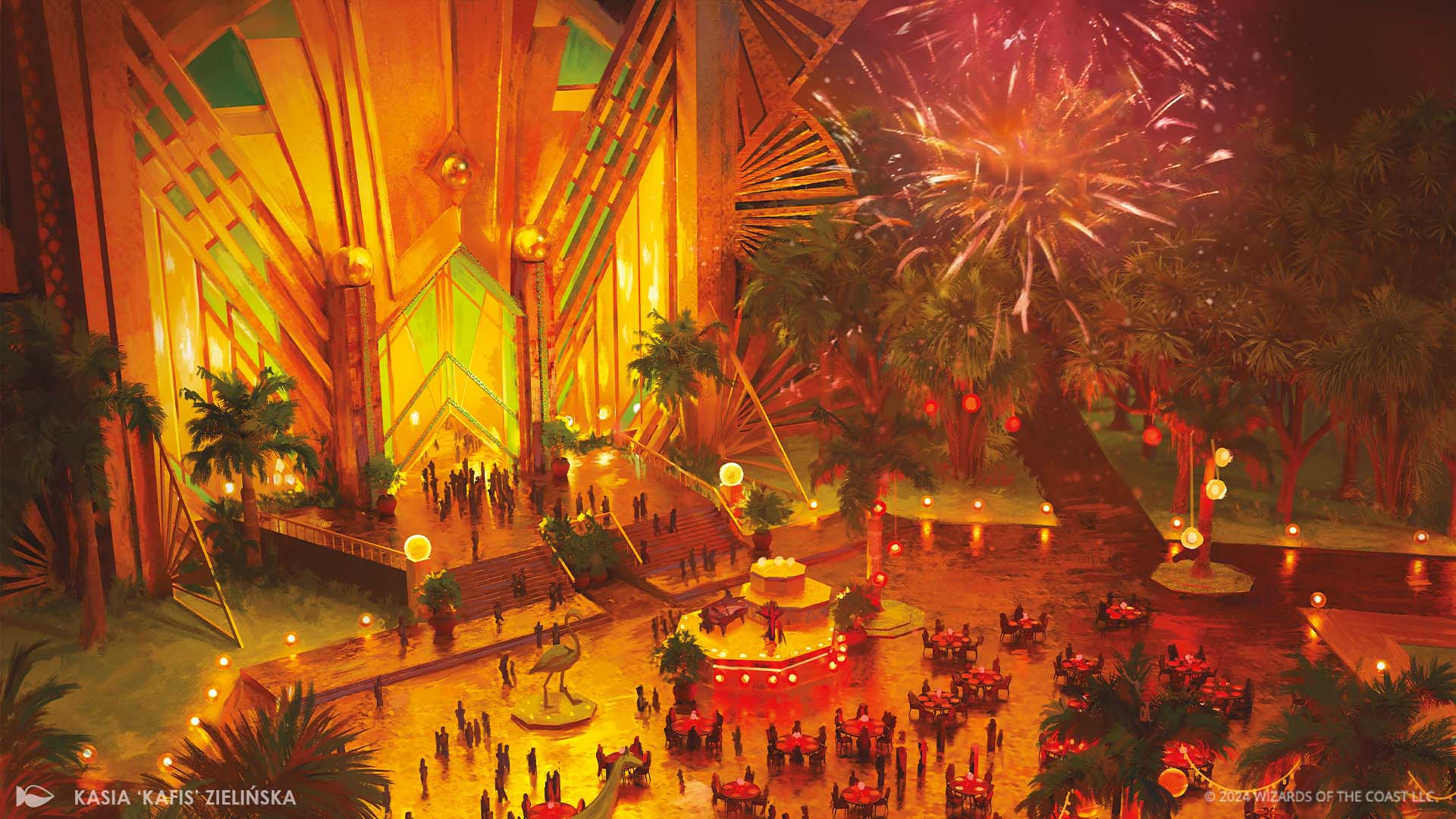
Previously seen in: Streets of New Capenna
Popularity: Liked
I see Streets of New Capenna as Magic's attempt at experimenting with a plane that has a bit more of a modern vibe (well, more modern compared to the rest of Magic). New Capenna had its fans, but it wasn't a huge hit overall.
Mechanical Identity: Strong
New Capenna is an arc/shard faction plane, with each faction built around a different crime-genre trope. A revisit would probably require new mechanics, but like Ravnica, they would need to stay true to the feel of each faction (i.e., if you put all the cards with the same faction watermark in a deck, they should play well together).
Creative Identity: Strong
New Capenna has a 1920s Art Deco vibe. It's a creative where you can see a single card from the set and instantly know where it's from, as it's distinctly its own thing.
Room for Expansion: Significant Room for Expansion
Because this set is so unlike other Magic sets, and it taps into a specific genre and look, there's a lot of unclaimed space that it could explore.
Story Continuation: Major Plot Line
Streets of New Capenna ends with an event that majorly overwrites the plane (the return of the angels). A return could explore all the ramifications to the plane of this big change.
Rabiah Scale Rating: 6
New Capenna has several positives going for it. It has a strong mechanical and creative identity. The story left a lot of threads hanging that a return could pick up. The biggest strike against a return is that the plane just wasn't that popular. However, that was also true for Kamigawa, and its return was a giant success, so initial unpopularity can be overcome with a good execution.
Thunder Junction
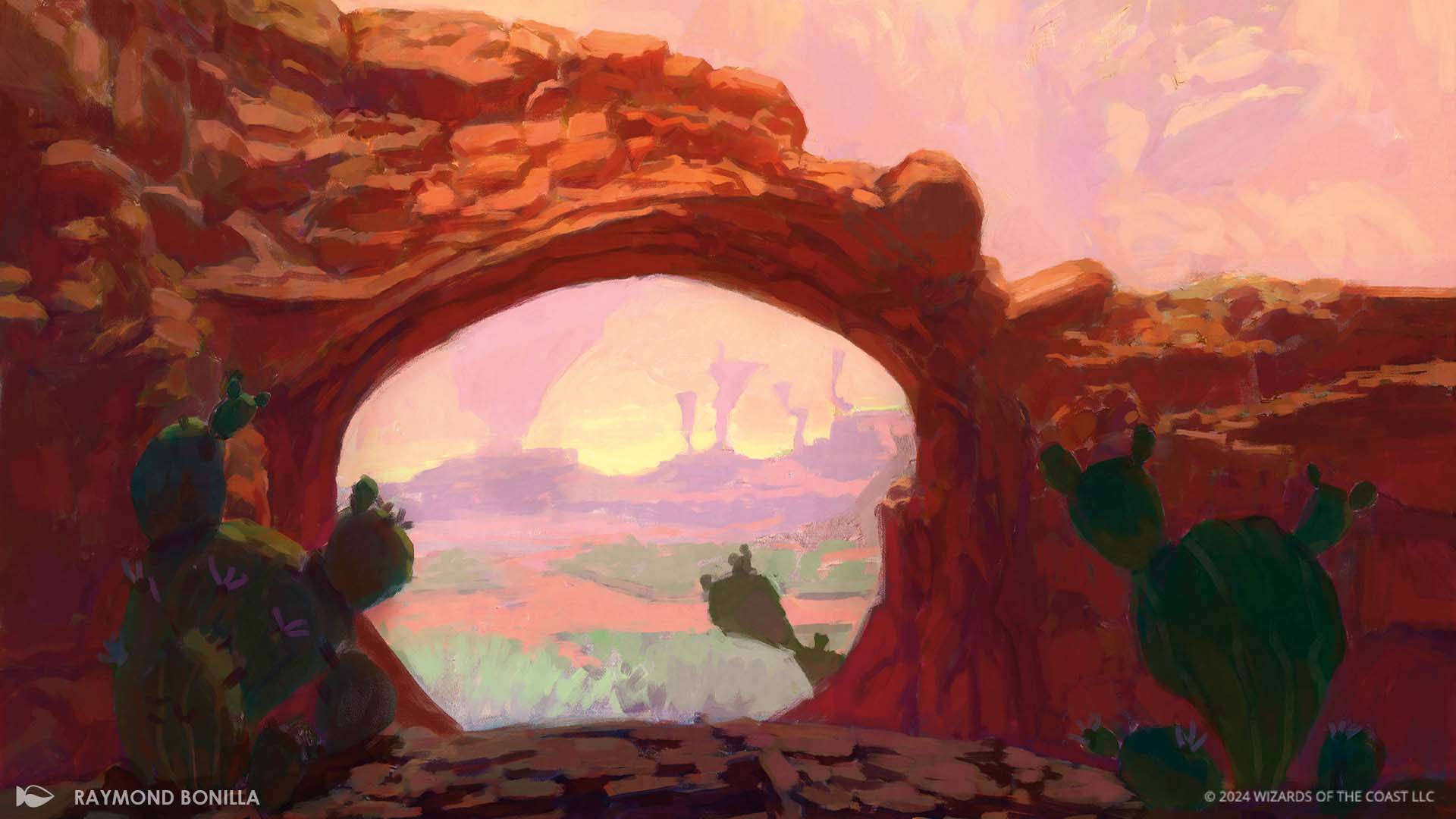
Previously seen in: Outlaws of Thunder Junction
Popularity: Too Soon to Tell
As I'm writing this article, the set hasn't come out yet, so it's hard to judge how popular the plane will be.
Mechanical Identity: Strong
The villain flavor to many of the mechanics (committing crimes, outlaws, plot, spree) helps give the play a distinctive feel. The mechanics in general are very solid and are open-ended enough that there's a lot of potential for new designs.
Creative Identity: Strong
Players generally like the Western-inspired feel of the set. There's a lot of initial feedback about the tone of the set, but that's something easily fixed with a return.
Room for Expansion: Significant Room for Expansion
As I said above, the mechanics have a lot of room for more designs. The plane is playing in a genre that has a lot of tropes, although some of them have problematic aspects. I think if we returned, there would be a lot for design and creative to work with.
Story Continuation: Minor Plot
This first big event of the current storyline, the heist of an ancient vault, occurs in the set. There are also a lot of named characters in the set that could lead to new storylines.
Rabiah Scale Rating: 5
Flexible mechanics and a flavorful top-down plane lead me to believe there's good reason for a return. Again, it's early, so a lot of this is based on initial reactions.
All the World's a Stage
That's all the new planes to talk about that I didn't hit last time. I assume in six or so more years I'll come back with part four. As always, I'm eager for any feedback on this article or on any of the planes I talked about. What planes do you want to return? You can email me or contact me through any of my social media accounts (X, Blogatog, Instagram, and TikTok) to let me know.
Until next time, may you get to visit the planes that excite you most.

